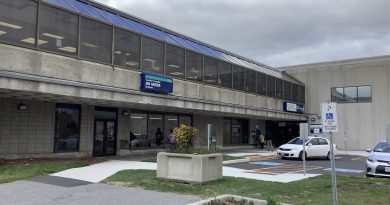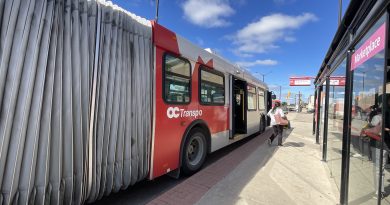Transit Access Key To A Sustainable Community
By Wilson Lo, Ward 24 Councillor
Earlier in the year, the Canadian Urban Transit Association (CUTA) invited me to join their Transit Board Members Committee (TBMC). The TBMC is comprised of people—mostly elected officials—who sit on transit committees, commissions, or their local equivalents across the country.
Along with the board invitation, CUTA invited me to attend their spring summit and annual general meeting in Saskatoon. So that’s where I was earlier in the month!
The TBMC meeting was a chance to gain more first-hand knowledge about transit performance across the country, challenges, and upcoming projects.
Most transit agencies across the country have met or surpassed their pre-pandemic ridership, though they were all small-to-medium-sized systems in cities with a heavy industrial workforce.
Across the country, there are exciting transit projects like Montréal’s RER and Calgary’s Green Line LRT. Montréal’s is approaching completion and Calgary’s is under construction. Both projects will bring rapid transit to areas currently underserved and aim to significantly improve connectivity between communities.
Interestingly (and embarrassingly), both projects have used our LRT and the public inquiry report as an example of what not to do.
Edmonton recently completely redesigned their bus network and introduced on-demand to areas of their system. Not only has ridership increased, but their on-demand service—currently Canada’s largest—has increased ridership in the communities it serves by 50 per cent.
Hopefully, we can achieve comparable results with the initiatives as part of our ongoing route review.
The theme of the larger CUTA summit was how transit and housing are complementary items when it comes to building livable cities for everyone.
Traditionally, transit arrives to new communities after construction, but with changing policies and positions across the country, it is time to bring housing to transit instead—a chicken and egg problem.
Through improved zoning and land use around major transit hubs, we can build sustainable communities where people can rely less on their cars, which is better for our built environment as well as our natural environment.
Forthcoming initiatives like the Permanent Transit Fund, which CUTA hopes to expand to include land acquisition around transit stations, will help improve transit usage.
There are opportunities for this in our own community, like the land at Nepean Woods and Fallowfield park and rides, which are currently well-underused. These are chances to build vibrant communities to replace the seas of asphalt.
I am grateful CUTA invited me to sit on their TBMC as our city’s representative and I enjoyed the opportunity to attend the summit in Saskatoon.






